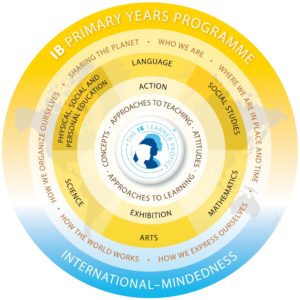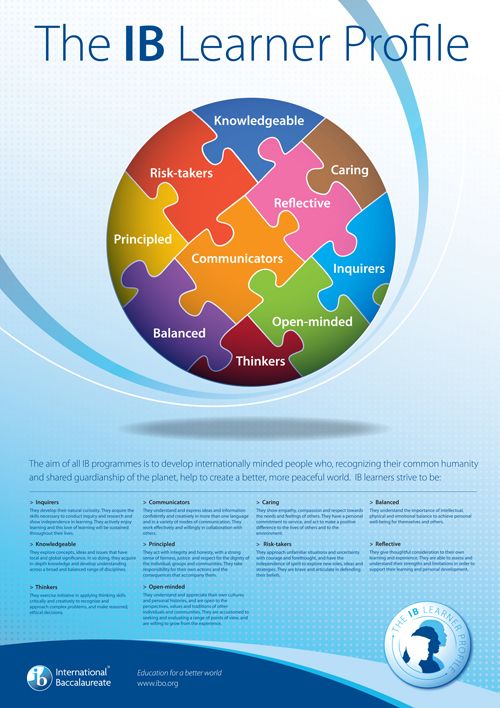Curriculum
The IB Primary Years Program (PYP) is a transdisciplinary programme of international education designed to foster the development of the whole child. It focuses on the total growth of the developing child, touching hearts as well as minds and encompassing social, physical, emotional and cultural needs in addition to academic development. The PYP curriculum has an international perspective where the diversity of student experiences and backgrounds is welcomed and celebrated. A PYP school strives towards developing an internationally minded person who demonstrates the attributes of the Learner Profile, which represents the qualities of a life -long learner.
The PYP Curriculum Model
The Primary Years Program is an inquiry based way of teaching and learning. Six transdisciplinary themes provide a framework for the exploration of knowledge as well as opportunities for students to develop skills, attitudes, concepts and knowledge needed to become internationally – minded people and a responsible world citizens. The curriculum in the PYP includes three interrelated components:
- the written curriculum (What do we want to learn?)
- the taught curriculum (How best will we learn?)
- the assessed curriculum (How will we know what we have learned?).
Program of Inquiry
Transdisciplinary Themes
Six transdisciplinary themes
These themes provide IB World Schools with the opportunity to incorporate local and global issues into the curriculum and effectively allow students to “step up” beyond the confines of learning within subject areas.
Who we are
Inquiry into the nature of the self; beliefs and values; person, physical, mental, social and spiritual health; human relationships including families, friends, communities, and cultures; rights and responsibilities; what it means to be human.
Where we are in place and time
Inquiry into orientation in place and time; personal histories; homes and journeys; the discoveries, explorations and migrations of humankind; the relationship between and the interconnectedness of individuals and civilizations, from local and global perspectives.
How we express ourselves
Inquiry into the ways in which we discover and express ideas, feelings, nature, culture, beliefs and values; the ways in which we reflect on, extend and enjoy our creativity; our appreciation of the aesthetic.
How the world works
Inquiry into the natural world and its laws, the interaction between the natural world (physical and biological) and human societies; how humans use their understanding of scientific principles; the impact of scientific and technological advances on society and on the environment
How we organize ourselves
Inquiry into the interconnectedness of human-made systems and communities; the structure and function of organizations; societal decision-making; economic activities and their impact on humankind and the environment.
Sharing the planet
Inquiry into rights and responsibilities in the struggle to share finite resources with other people and other living things; communities and the relationship within and between them; access to equal opportunities; peace and conflict resolution.
IB Learner Profile
Grade 5 Exhibition
Students in the final year of the PYP carry out an extended, transdisciplinary inquiry project, the PYP exhibition. It is an opportunity for students to work collaboratively with other students, teachers, parents and experts to identify, investigate and take positive action on an issue that matters to them. The PYP Exhibition is a major project that allows students to apply skills from all five sets of transdisciplinary skills: communication, research, thinking, social and self – management skills. Students will display the attitudes that they have been developing in the PYP, as well as the attributes of the Learner Profile. It is both a transdisciplinary inquiry as well as a summative assessment activity that is a celebration of the passage from the Primary Years Programme in the Elementary School to the Middle Years Programme in the Middle School. Students begin early in the year to identify issues that they are hearing about, notice around them, want to know more about, want to do something about, and that really matter to them. In the second half of the year students negotiate with each other to collaboratively identify and agree upon the central idea and focus of the PYP exhibition for the year. Towards the end of the year, the students set up interactive displays to share their learning with the rest of the ISoB community: all students, parents, as well as other community members are invited.




